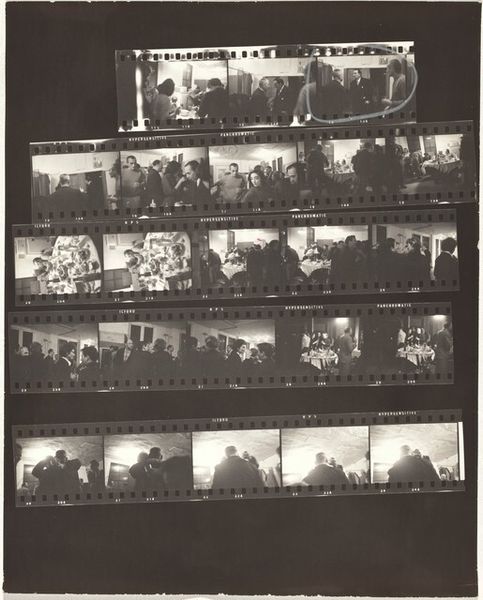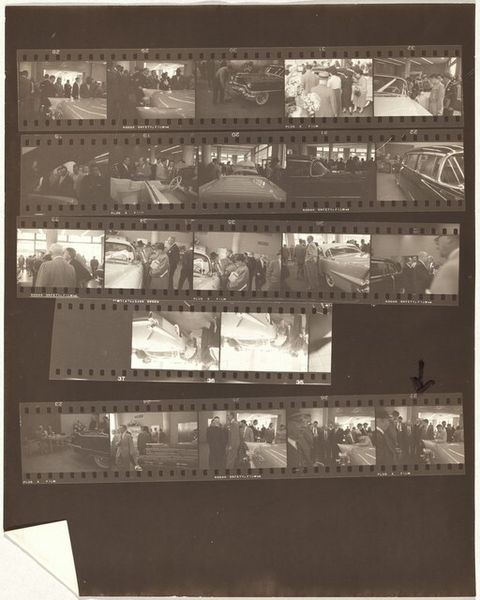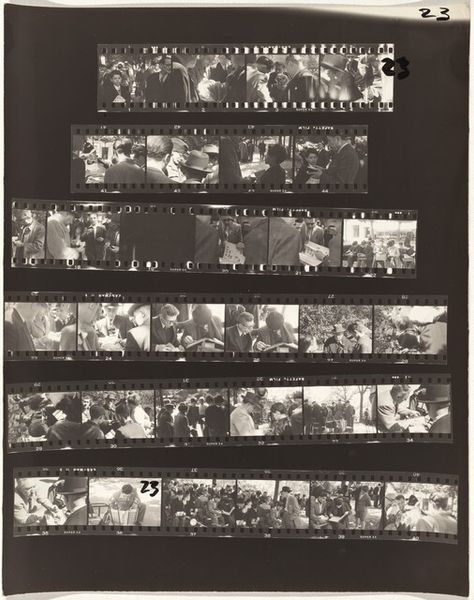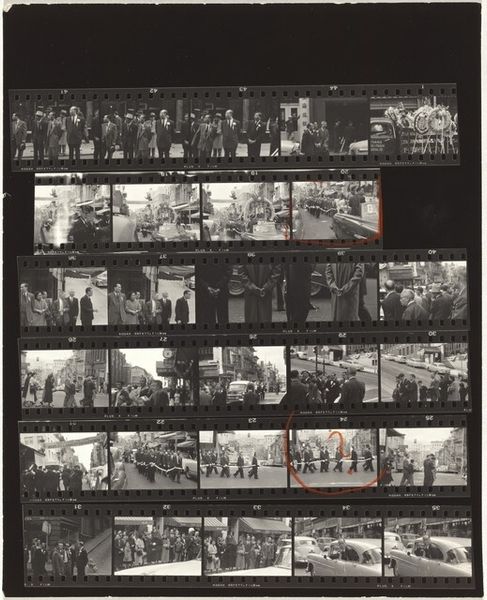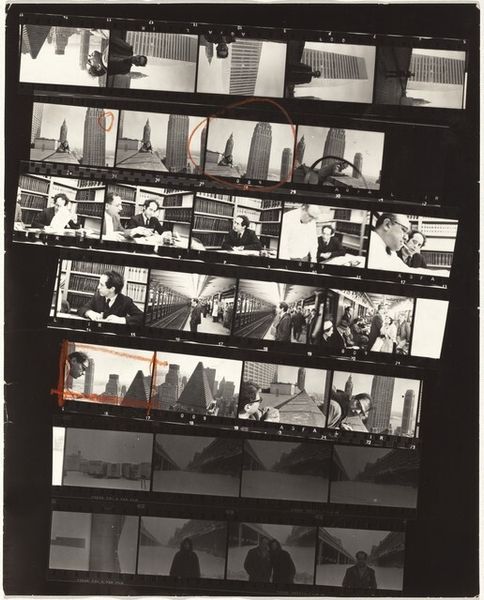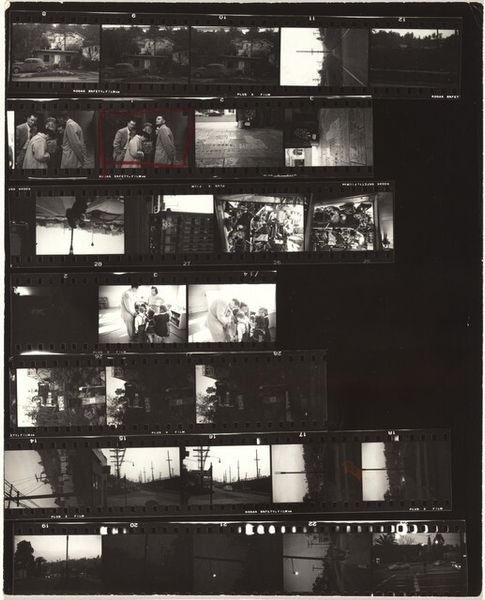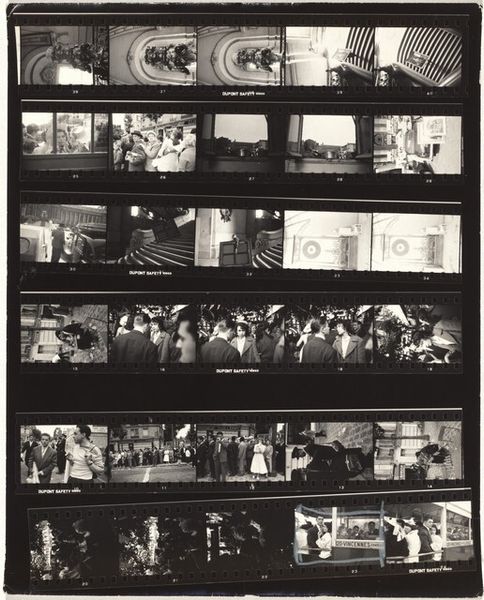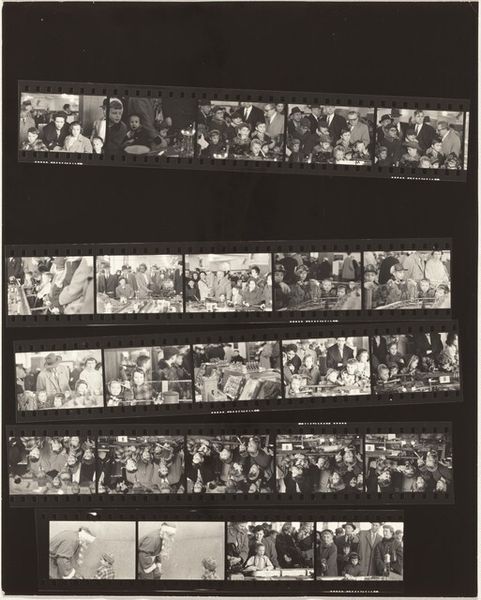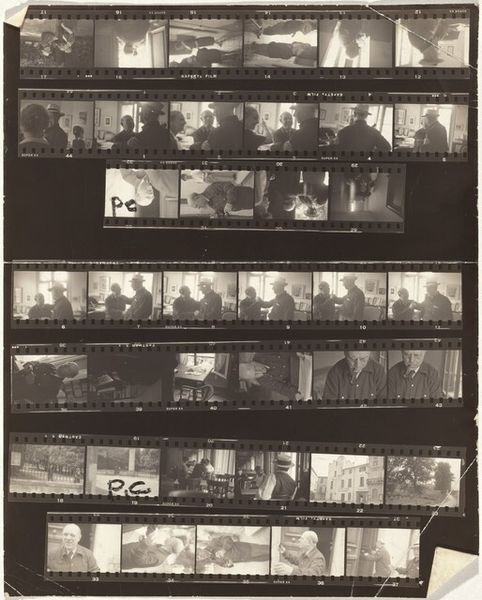
print, photography, gelatin-silver-print
#
portrait
#
film photography
# print
#
street-photography
#
photography
#
gelatin-silver-print
#
monochrome photography
#
history-painting
#
monochrome
Dimensions: overall: 25.2 x 20.2 cm (9 15/16 x 7 15/16 in.)
Copyright: National Gallery of Art: CC0 1.0
Curator: Robert Frank's "Guggenheim 750--New Haven, Connecticut," made in 1956, is before us. It is presented as film photography with its contact sheets visible. What’s your immediate take? Editor: Stark and direct, wouldn’t you say? It presents us with a contact sheet – we see not just the 'decisive moment,' but all the frames around it, offering a view into Frank’s process and his chosen material. There's almost a gritty texture, a sense of unvarnished reality that I find very compelling. Curator: Indeed, its composition gives us insight into the wider project of cultural critique he engaged in. We need to consider the history of institutions –here the Guggenheim Foundation and educational institutions of New Haven. His photography implicitly questions what is worthy of support. What kinds of knowledge are valorized by these institutions, and which perspectives are omitted? Editor: It's fascinating how the materiality of film supports such an interpretation. The individual frames show different people in New Haven at a specific point in time. Each has an existence that is tied up with material resources like factories, urban environments, and disposable income. These are traces of specific labor conditions and economic status that we're prompted to examine, row by row. It feels much more embedded than a carefully selected image would. Curator: Precisely, Frank's aesthetic choices must be read against the dominant visual culture of the mid-20th century. The snapshot aesthetic, combined with these varied street scenes, challenge the image of American exceptionalism that was heavily promoted during the Cold War. He shows ordinary lives instead of propaganda. Editor: So, we're left with the material truth, really. Silver gelatin, celluloid – these elements captured and revealed, not an idealized version of life, but its gritty underbelly, available for our collective consumption and critique. This speaks volumes about Frank’s project as a photographer, both social commentator and technical producer of art. Curator: Yes. His focus on daily experience shifts the politics of the image, opening our understanding about photographic creation in 1950s America. This challenges both photographic standards, cultural narratives and their associated historical forces. Editor: A compelling piece. The contact sheet really compels reflection, both about Frank's process and our consumption habits regarding photographic art and media.
Comments
No comments
Be the first to comment and join the conversation on the ultimate creative platform.
